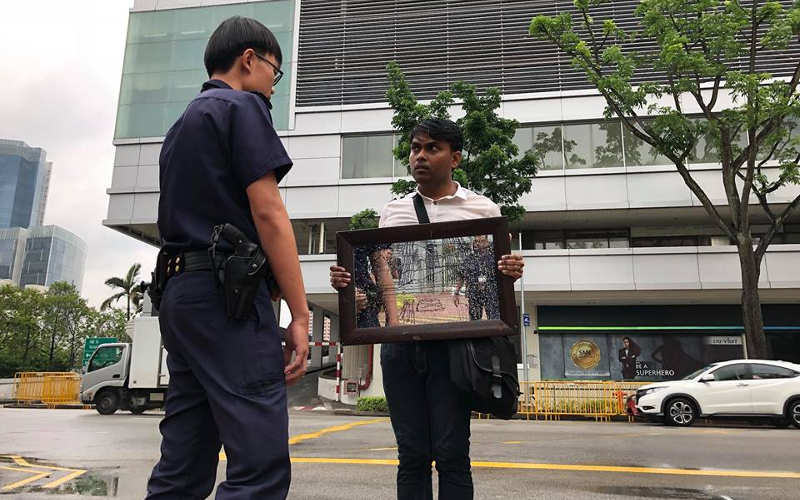If the name Seelan Palay rings a bell, chances are you might have heard it after he was arrested outside Singapore's Parliament House on October 1, 2017.
According to the Straits Times, he was sentenced to two weeks' jail a year later, on October 4, 2018, for being part of a public procession without a permit.
Seelan had chosen the jail sentence instead of paying a S$2,500 fine.
He had been in the midst of what he maintains is a performance art piece — titled "32 Years: The Interrogation of a Mirror" — which broadly involved drawing on a mirror and holding it up at Hong Lim Park, in front of the National Gallery, and also in front of Parliament House.
He's since been branded a political artist and activist, but it's not a label that Seelan readily embraces.
In the June 2019 issue of local art magazine Objects Lesson Space (OLS), he gave a wide-ranging interview in which he describes the thinking and motives behind everything he did, as well as his arrest and subsequent jail sentence.
And, as we discovered, it is a fascinating story.
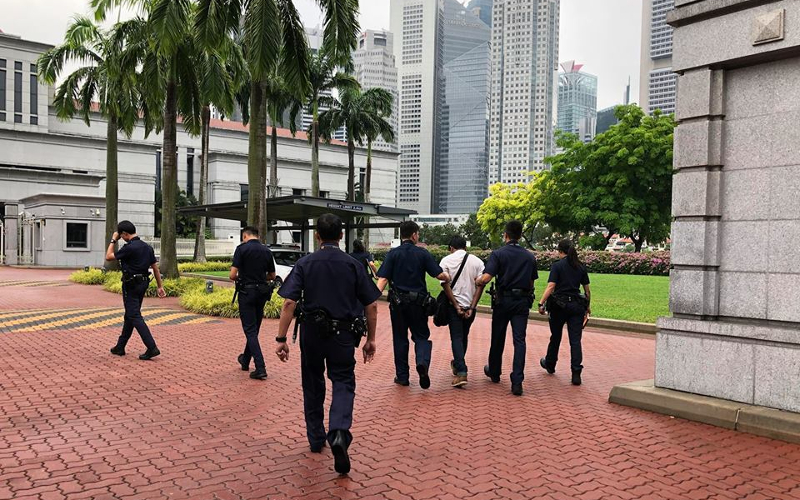 Photo courtesy of Seelan Palay
Photo courtesy of Seelan Palay
A work about the suffering of Chia Thye Poh
The idea for "32 Years" actually came to Seelan two years before it actually happened — when he was 30.
"The work came about when I revisited the life of Dr Chia Thye Poh on my 30th birthday," said Seelan.
"I realised that in two years time, I would have lived for the same amount of time that Dr Chia spent in detention."
Chia, a former Member of Parliament for the now-defunct Barisan Sosialis, was arrested under the Internal Security Act in 1966, and was only released 23 years later in 1989. Thereafter, he served another nine years under severe restrictions.
Seelan reportedly found it "unbearable" to think about the suffering Chia must have gone through and found himself experiencing a range of strong emotions as he reflected on Chia's life.
Though he did not know how he was going to do it yet, Seelan then pledged to channel these emotions into some form of art when he turned 32.
"With this performance that reflects on Dr Chia Thye Poh’s life, it wasn’t just about his politics or his ideas. It was about him as a human being, and the amount of suffering he’s been through."
What he actually did during the performance
According to an interview he did with the Los Angeles Review of Books (LARB) earlier this year in January, Seelan kicked things off by reciting a few lines of a monologue to a mirror.
"[The lines were] based on some notes about Chia’s life and my own — what Chia was doing in a certain year and what I was thinking in that year, up until the day of the performance."
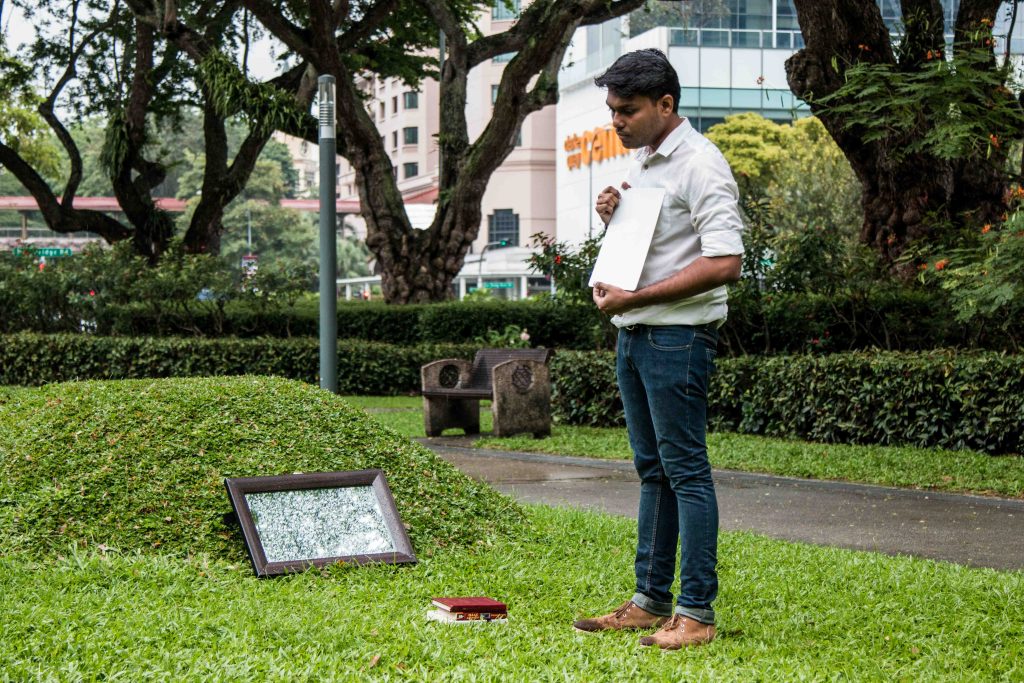 Photo courtesy of Seelan Palay
Photo courtesy of Seelan Palay
He then took out different objects from his bag and drew outlines of them on the mirror.
The performance started at Hong Lim Park, which Seelan had obtained a permit to perform at.
However, he later went to the National Gallery and Parliament House, continuing the performance by drawing the façades of those buildings on the mirror.
As part of the performance, Seelan had also unfurled a banner that said "Passion made probable".
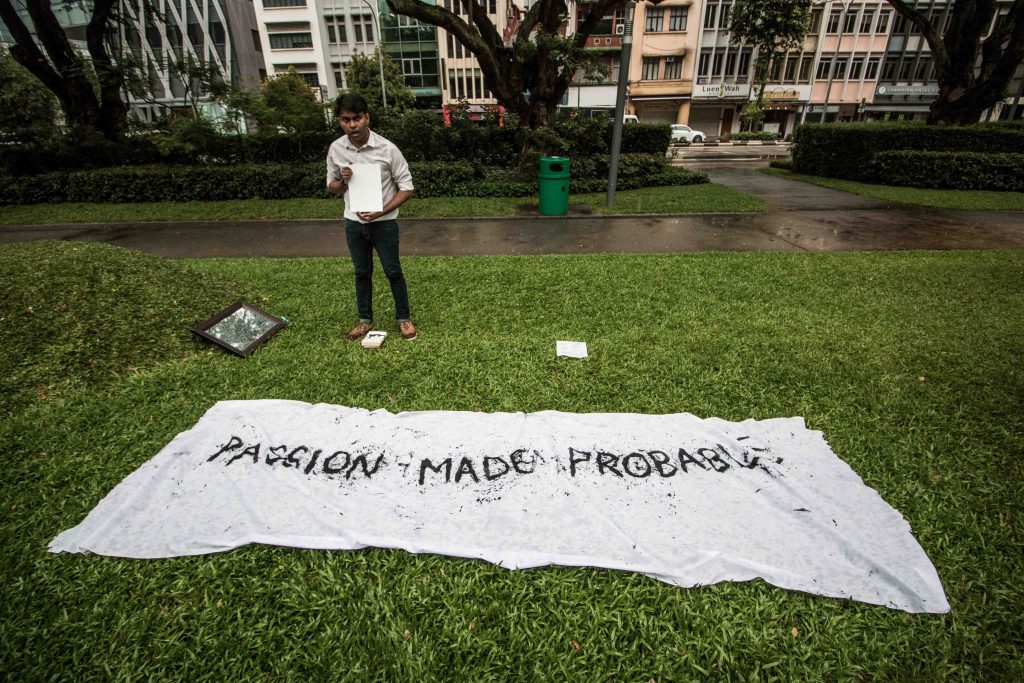 Photo by Foo Chuan Wei, courtesy of Seelan Palay
Photo by Foo Chuan Wei, courtesy of Seelan Palay
Talking to OLS, he explained that the banner was a response to the Singapore Tourism Board's slogan "Passion Made Possible":
"The point I was trying to make was that not all passions are possible here, some are only probable — so let’s see what’s probable today.
Throughout that journey from the Speakers’ Corner to the National Gallery and finally to the Parliament House, there was always this sense of probability. I didn’t know if I was going to be stopped in the park, or as I walked out, or at the Gallery, or at the Parliament House."
It was while Seelan was drawing in front of Parliament House that he was eventually arrested.
Represented himself in court
Seelan ended up representing himself in court, explaining the decision in his interview with LARB:
"I found it important to argue and defend myself based on the nature of the artwork, and I felt like a lawyer may not be able to do that. Not all of my arguments were based on legal pronouncements, and it’s not so easy for someone other than the artist to represent that."
By representing himself, Seelan was able to personally cross-examine witnesses, which included the on-site police officers who had arrested him.
"I took a few of the objects used in the performance: the book, mirror, drawings, and banner that I used at Speakers’ Corner. I showed them to the arresting officer and asked him what meaning he derived from the objects. He admitted that he didn’t understand what they were trying to say."
According to Seelan, he asked the officer if his performance that day had threatened public order and national security:
"To all those things, he said no. Eventually, he said that I seemed to be causing an inconvenience to the guards."
Eventually, the judge declared that Seelan had conducted the procession for three purposes:
"To commemorate Dr. Chia, to demonstrate opposition to the government, and to oppose the institution of the Speakers’ Corner."
"The whole process was part of the performance", including getting arrested & going to jail
In the final analysis, Seelan says he personally did not agree with the judge's ruling.
Instead of a political demonstration, he sees his performance as a reflection of his own "lived experience of 32 years".
He posited to the LARB that there were many layers to 32 Years.
"I didn’t want to break down every single component (though), because I feel like art should still be left open to interpretation and it wouldn’t be doing a service to anyone."
He also refused to pay the S$2,500 fine as he felt that doing so would be an admission of his guilt — something he still denies.
Seelan readily admits that the prospect of arrest and jail had occurred to him while he was planning the performance, though he's clear about what he feels when it comes to his punishment:
"Human beings, I think, should be free to express themselves, even if they are not artists, as long as exercising their rights doesn’t take away the rights of anyone else. There should be a free market of ideas alongside our famous free market economy."
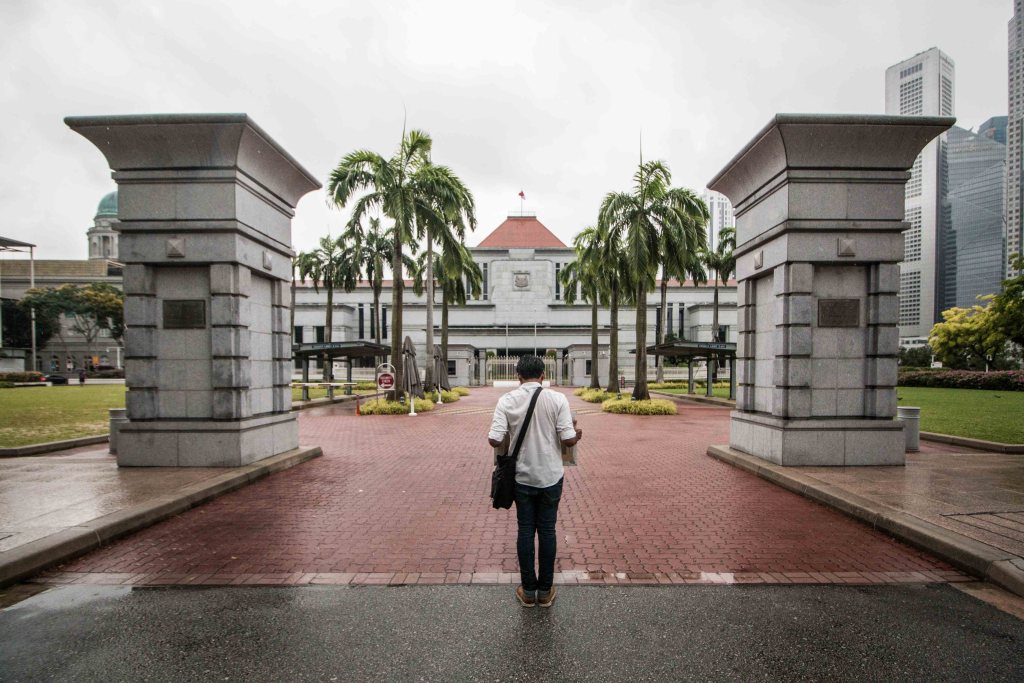 Seelan in front of Parliament House. Photo by Foo Chuan Wei, courtesy of Seelan Palay
Seelan in front of Parliament House. Photo by Foo Chuan Wei, courtesy of Seelan Palay
But perhaps the most mind-blowing aspect of everything Seelan has gone through is the true extent of his performance:
"Actually, the whole process was part of this performance, including being arrested, facing charges, going to trial, being detained, and then being released.
One of the books I brought into prison with me was Art as Experience by John Dewey, and when I was released, I looked down at the book and the ground and announced that the performance was now concluded — after more than a year."
Top photo courtesy of Seelan Palay
If you like what you read, follow us on Facebook, Instagram, Twitter and Telegram to get the latest updates.
